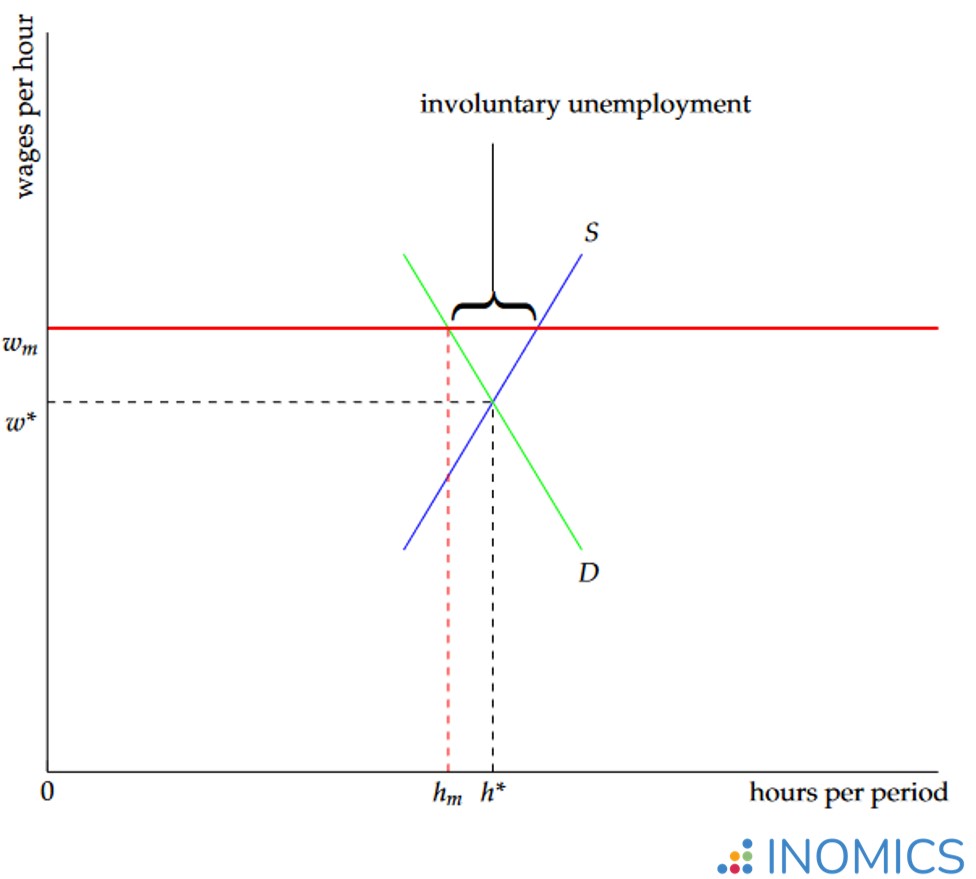
Economics Terms A-Z
Ceteris Paribus
Read a summary or generate practice questions using the INOMICS AI tool
When economists say “ceteris paribus” they are talking about the direct effect of X on Y while assuming that the rest of the world stands still.
Ceteris is Latin for “other things” and paribus means “equal”, so the literal translation is “other things being equal”. The concept of ceteris paribus in economics it is generally understood to mean that all other things remain equal or are held constant while dealing with the issue at hand.
Video Note: In the video, “ceteris” is pronounced with a "ke". However, in many other places it will be pronounced “se". Our research says either is fine. Our narrator just found it more natural in their accent to say the former. But if you have strong feelings about Latin pronunciations do let us know.
As an example of ceteris paribus analysis, one may wonder what the impact of introducing a minimum wage will be on the level of employment in an economy. A basic economic analysis of the labor market, as shown in the graph just below, might consider employers’ demand for labor D and (potential) employees’ supply of it S, quantified in hours worked per period for a particular hourly rate of pay.
Demand for labor increases as the hourly wage falls since it becomes cheaper to hire workers. On the other hand, the supply of labor increases as the hourly wage rises because it is more attractive for people to work at higher wages. In this free labor market, equilibrium is where demand meets supply and h* hours are purchased by employers at the hourly wage of w* (the market-clearing rate of pay).
Figure 1: Involuntary unemployment in the labor market
All else equal, ceteris paribus, if a minimum wage Wm is introduced that is higher than the market-clearing rate of pay w* then employers will demand less labor and there will be a reduction in employment (total hours worked decrease from h* to hm), creating involuntary unemployment. Although there are workers in the labor market who would like to supply more hours’ work than hm at the minimum wage Wm employers are unwilling to pay for more than hm hours at the new rate.
Note how this basic analysis ignores other effects of the increase in wages, such as what happens to the workers who remain in employment. Because we specified ceteris paribus, we would not be concerned with those other effects. However, extending our analysis, those still in employment now earn more per hour and may spend their extra earnings, increasing their demand for goods and services. This could end up creating more employment than the graph suggests.
The workforce could also become more productive if employers choose to shed less productive employees first. This would normally make the economy more competitive with other economies, leading to greater exports. In turn, (domestic) employers will again increase their demand for labor.
The above example of ceteris paribus analysis with its conclusion that “a minimum wage creates unemployment” also ignores the effects of other things that are potentially happening simultaneously. The supply of labor might be growing or shrinking due to demographic changes, or the effects of a new income-tax or child-benefit policy introduced at the same time. A more realistic economic model might attempt to incorporate some of these complexities. But, one of the core reasons we specify ceteris paribus is to simplify an analysis and focus on the effects we’re interested in.
A ceteris paribus approach thus typically involves partial equilibrium rather than general equilibrium analysis and focuses on the short term rather than the medium or longer term. While this may not seem satisfactory from a practitioner perspective, there is an advantage to simplifying the world through ceteris-paribus modelling: it allows the analyst to concentrate on one mechanism at a time and to try to understand and explain causal relationships. As long as the economic analyst is careful not to overstate claims, a ceteris-paribus analysis often offers more insight than do ambitious attempts to explain everything that is happening at once throughout the whole economy.
Further reading
The philosopher and economist Daniel Hausman provides a critical account of deductivism in economics and how ceteris paribus has been (mis)used by economists over the years in “Economic Methodology in a Nutshell” (Journal of Economic Perspectives, 1989).
Good to know
Although the real world is generally too messy to test economic theories that rely on ceteris-paribus assumptions, there are ways to get around this. Behavioral economists design experiments that essentially create ceteris paribus conditions within a controlled laboratory setting. Participants in the experiments are asked to make decisions under certain conditions. The experimenter is then able to isolate the direct effects of policy changes by altering one condition at a time while holding all else equal: ceteris paribus!
-
- Conference
- Posted 1 week ago
19th RGS Doctoral Conference in Economics - Fiscal Challenges
Between 18 Feb and 19 Feb in Bochum, Germany -
- PhD Program
- Posted 1 week ago
Ruhr Graduate School in Economics: fully funded PhD Program
Starts 1 Oct at Ruhr Graduate School in Economics (RGS Econ) in Dortmund, Germany
-
- PhD Candidate Job
- Posted 1 week ago
PhD Candidate in Impact Evaluation of Welfare Programs
At NTNU: Norwegian University of Science and Technology in Trondheim, Norway















